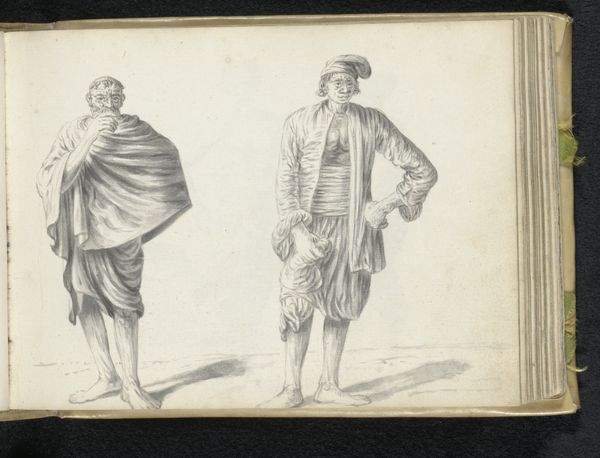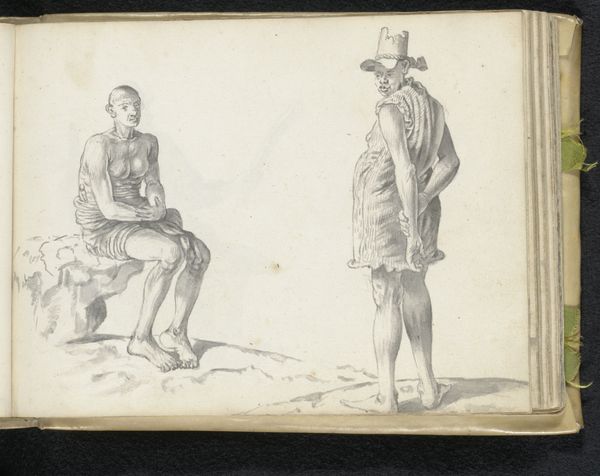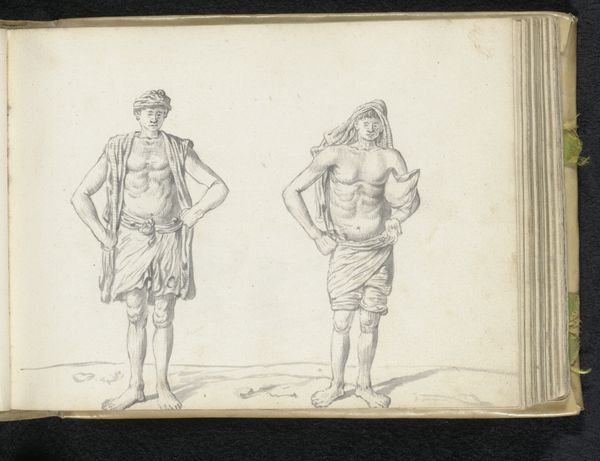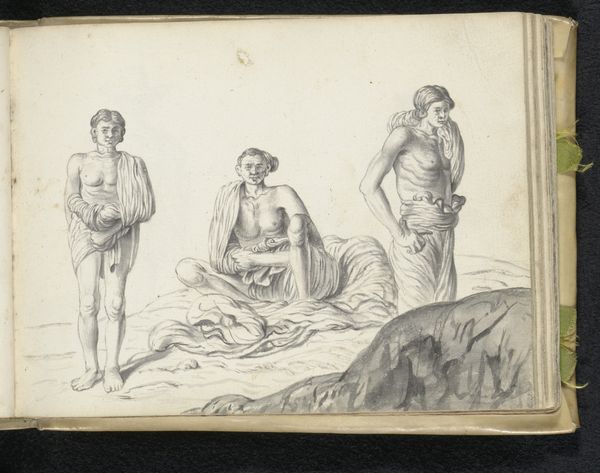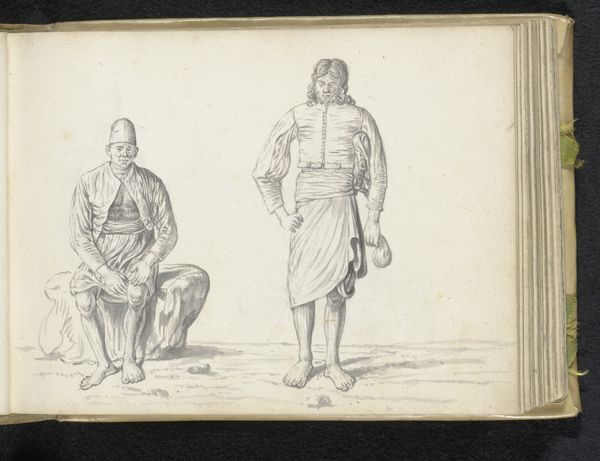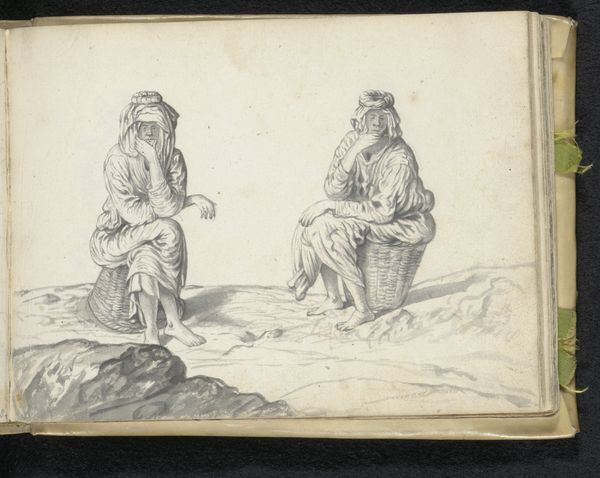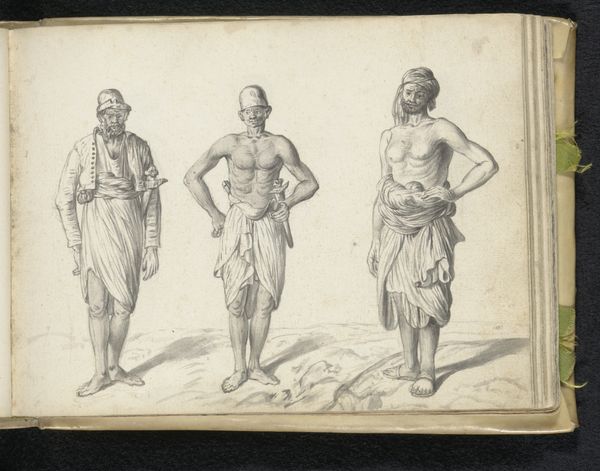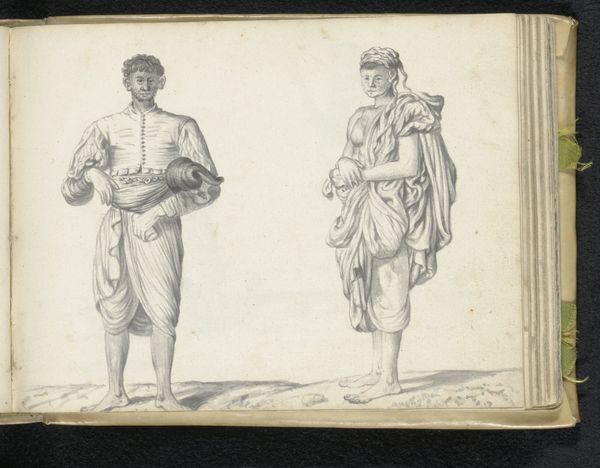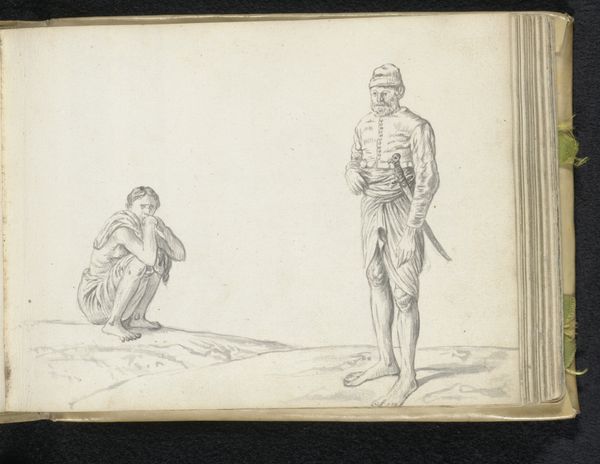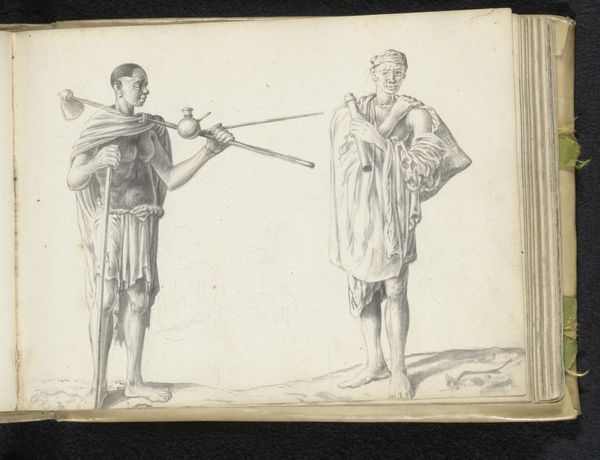
drawing, pencil
#
portrait
#
drawing
#
dutch-golden-age
#
pencil sketch
#
figuration
#
coloured pencil
#
pencil
#
genre-painting
Dimensions: height 148 mm, width 196 mm
Copyright: Rijks Museum: Open Domain
Curator: Esaias Boursse’s pencil drawing, “Two men,” from 1662, offers us a glimpse into Dutch Golden Age figuration. Editor: Striking. The subdued palette creates an almost ethereal feel. The composition, two figures starkly separated, hints at a narrative tension. Curator: Boursse, though often overlooked, operated within a vibrant artistic and economic milieu. His drawings, including this one, were commodities, produced within a specific network of patronage and artistic exchange. How do you read their garments? Editor: The clothing, though sketched with economical lines, suggests a sort of classical draping combined with what appears to be everyday wear, creating an intriguing contrast. I would suggest focusing on how the rendering affects perception: how it suggests character and dignity of ordinary figures. Curator: Indeed. The seeming contradiction makes them stand out, yes? Consider the availability and cost of materials during the Dutch Golden Age. Pencil, paper, and the labor-hours dedicated to the piece… these were investments. Editor: Investments that resulted in balanced asymmetry! The angles of their stances, mirroring yet offsetting each other, create a subtle visual harmony despite the spareness of the drawing. The rendering offers us information about line, volume, space… Curator: It seems crucial to recognize that Boursse's "Two Men," wasn't made in a vacuum, of course. The artist would have worked through a network, with apprentices, the paper produced by mills… the final image isn't just an aesthetic statement, but an index of its creation and consumption. Editor: Yet, despite its place in commerce, look at the emotion it triggers. Despite not being traditional painting, this piece resonates deeply, offering a moment of contemplative grace through deceptively simple lines. Curator: Understood! By studying these figures, as sketched using Boursse’s technique of his era, we can understand how drawings reflect both formal skill and societal norms of labour, of production. Editor: Well, whatever one may believe the intention of the artist was, both our interpretations only enrich the piece with multiple facets to view it under, creating an individual and more complex perspective overall.
Comments
No comments
Be the first to comment and join the conversation on the ultimate creative platform.


